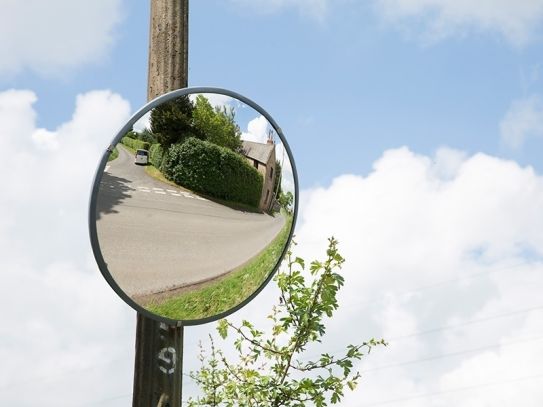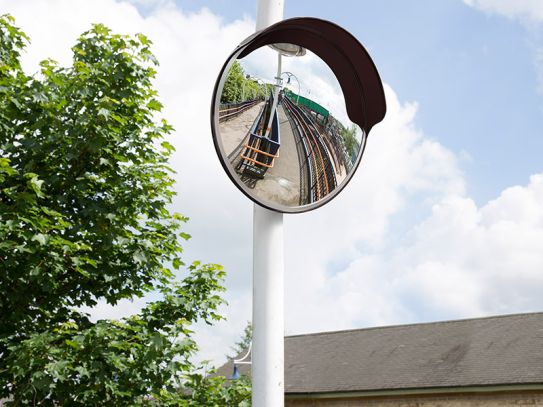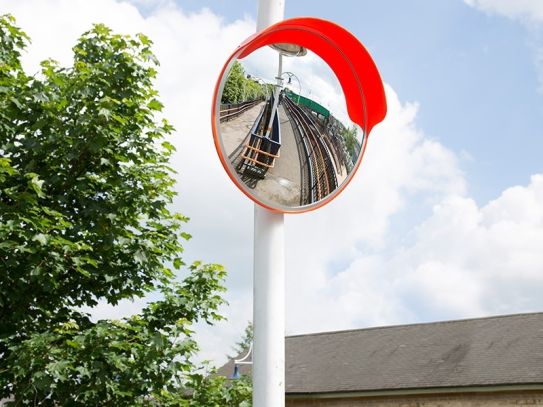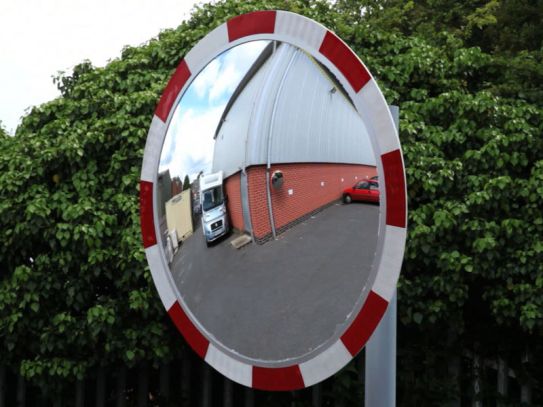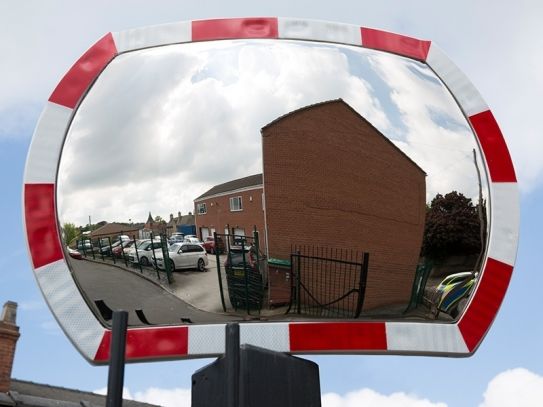Traffic Mirrors
Don't let blind spots put you and your loved ones at risk. Our traffic mirrors are designed to give you a clear view of oncoming vehicles, so you can safely navigate intersections and other areas with limited visibility. Easy to install and durable, these mirrors help prevent accidents and improve safety for drivers, pedestrians, and cyclists alike.
Safe Driving Starts with Good Visibility
Are you tired of not being able to see around corners while driving? Our traffic mirrors are here to help! Our convex mirrors provide a wide field of view, allowing you to see approaching vehicles and potential hazards before they become a problem. Plus, with a durable design and easy installation, our traffic mirrors are the perfect solution for improving safety on the road. Don't let limited visibility put you at risk – get a traffic mirror today and drive with confidence!
Where Can Traffic Mirrors Be Used
Traffic mirrors, also known as convex mirrors, can be used in a variety of settings where visibility and safety may be a concern. Some common places where traffic mirrors are used include:
- Junctions: Traffic mirrors can be placed at intersections to allow drivers to see around corners and avoid collisions with other vehicles or pedestrians.
- Driveways: Traffic mirrors can be used in residential or commercial driveways to allow drivers to see if there are any other vehicles or pedestrians in the area before pulling out onto the street.
- Car Parks: Traffic mirrors can be used in parking lots to improve visibility and help drivers avoid collisions with other vehicles or pedestrians as they move through the area.
- Entrances and exits: Traffic mirrors can be placed at entrances and exits to buildings, parking garages, and other facilities to allow drivers and pedestrians to see what is happening in the area and avoid collisions.
Traffic mirrors can be used in any situation where improved visibility and safety are a concern. They are often used in conjunction with other safety measures, such as stop signs and traffic signals, to help prevent accidents and improve traffic flow.
What Are the Benefits of Traffic Mirrors?
There are several benefits to using traffic mirrors in roadways. First and foremost, they can help improve safety by allowing drivers to see around corners or other areas where their vision may be obstructed. This can help prevent accidents and reduce the likelihood of collisions. Additionally, traffic mirrors can help improve traffic flow by allowing drivers to see approaching vehicles or pedestrians, which can help them make informed decisions about when to accelerate, slow down, or change lanes. Finally, traffic mirrors can also be useful in parking lots, warehouses, and other areas where visibility is limited.
How Do You Use a Traffic Mirror?
To use a traffic mirror, simply approach the mirror and look into it to see what is on the other side. The mirror should be mounted at a height and angle that allows you to see clearly around the corner or bend in the road. Keep in mind that traffic mirrors are designed to provide a wide field of view, so you may need to adjust your position slightly to see the entire area that the mirror is intended to cover. As always, it is important to maintain a safe following distance and to be prepared to stop or take evasive action if necessary.
Are There Any Safety Issues with Traffic Mirrors?
There are a few potential safety issues to be aware of when using traffic mirrors. First, it is important to make sure that the mirrors are properly installed and maintained. If the mirrors are not positioned correctly, they may not provide an accurate reflection of the road ahead, which could lead to accidents. Additionally, traffic mirrors can sometimes create blind spots, where vehicles or pedestrians may be hidden from view. This can be especially dangerous if drivers are relying solely on the mirrors to see what is on the road ahead. To avoid these issues, it is important to use traffic mirrors in conjunction with other safety measures, such as good visibility and a safe following distance.
How Do I Maintain My Safety Mirror?
To maintain the safety and effectiveness of your traffic mirror, there are a few key steps you can take. First, make sure that the mirror is properly installed and positioned. The mirror should be mounted at the correct height and angle to provide a clear view of the road ahead. Additionally, check the mirror regularly for signs of damage or wear, such as cracks, chips, or discoloration. If the mirror is damaged, it should be replaced as soon as possible. Finally, keep the mirror clean by removing any dirt, debris, or snow that may have accumulated on the surface. This will help ensure that the mirror provides a clear reflection of the road ahead.
Are There Different Types of Traffic Mirrors?
Yes, there are several different types of traffic mirrors available. The most common type is the convex traffic mirror, which has a curved surface that allows drivers to see a wider area than they would with a flat mirror. There are also larger, circular traffic mirrors known as "bullseye" mirrors, which are typically used at intersections or other high-traffic areas. Finally, there are also traffic mirrors that can be mounted on the fronts of vehicles, such as buses or trucks, to help drivers see around corners or other blind spots. These mirrors are typically smaller than the mirrors used on the side of the road, but they serve the same basic purpose of improving visibility.
Are There Any UK or European Industry Standards or Regulations That Apply to Traffic Mirrors?
Yes, there are several industry standards and regulations that apply to traffic mirrors in the UK and Europe.
In the UK, traffic mirrors must comply with the British Standard BS EN 1463-1:2001, which sets out the requirements for the design, performance, and testing of traffic mirrors. Additionally, the UK Highway Code recommends the use of traffic mirrors at certain locations, such as intersections, roundabouts, and other areas where visibility is limited.
In Europe, traffic mirrors must comply with the European Standard EN 1463-1:2008, which is similar to the UK standard. This standard covers the performance and testing requirements for traffic mirrors, and it is intended to ensure that mirrors are safe and effective for use in roadways. Additionally, individual countries may have their own regulations and standards that apply to traffic mirrors, so it is important to check with the relevant authorities to ensure compliance.
